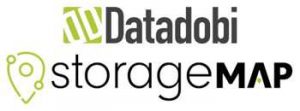Datadobi StorageMAP V.6.3 with Object Storage Multi-Vendor/Multi-Cloud Unstructured Data Management Platform
Enables companies to archive, pipeline, and replicate unstructured data to object storage on-premises or in cloud without lock-in.
This is a Press Release edited by StorageNewsletter.com on November 21, 2022 at 1:02 pmDatadobi announced enhancements to its multi-vendor, multi-cloud unstructured data management platform StorageMAP.
The 6.3 release introduces the ability to copy NAS data to any S3-compatible object storage system. The file-to-object copy functionality adds to StorageMAP’s ability to help IT leaders archive, pipeline, and replicate file data to S3.
Unstructured data makes up 80% or more of enterprise data and is growing by 55% to 65% per year, making it difficult for companies to keep up with unstructured data management efforts. The complexity of today’s heterogeneous storage environments has caused 95% of organizations to cite the need to manage unstructured data as a problem for their business.
With StorageMAP 6.3, companies can create a copy of file data on a cost-effective object storage server or service within different geographies, tech stacks, or networking providers. This enables organizations to archive aging and/or redundant, obsolete, and/or trivial (ROT) data to less expensive storage, pipeline data to the cloud for running cloud-native analytics and AI/ML applications against the data, or maintain a safe copy of data on heterogeneous storage OS helping protect against OS specific bugs or hacks.
Update addresses 4 main critical concerns for enterprises:
-
Cost control – Orphaned data – Datasets owned by employees of a company that are inactive but still enabled on an organization’s network or systems – represents a source of ‘dark’ data consuming valuable capacity on NAS. Being able to move these datasets from NAS to S3-compatible object stores without lock-in allows IT leaders to reduce costs and free up space on expensive production storage.
-
Conformance to environmental, social, and governance (ESG) policies – According to 451 Research, 53% of enterprises currently have a formal ESG program in place or are planning for one. With StorageMAP capabilities, datasets with a higher degree of CO² emissions associated with it can be relocated to cleaner storage. In addition, IT leaders can consolidate a larger number of NAS systems to reduce energy consumption and CO² generation.
-
Risk reduction – Orphaned or ROT data can introduce risk to organizations because it is often unmonitored due to a clear lack of business ownership or excessive aging. The option of relocating this data from production NAS to remote or cold object storage can help prevent it from being exploited or leaked.
-
Maximizing unstructured data value -The average organization only uses 50% of available data for decision-making. With StorageMAP’s latest release, unstructured data can be quickly copied to the cloud and analyzed by cloud-native AI/ML. This allows IT leaders to gain valuable insights into customer behavior, trends, and more.
“We live in an unstructured data-driven world. While a valuable asset to a business, the sheer magnitude and growth of unstructured data across disparate data storage estates brings risk and often wholly unnecessary costs for companies,” said Carl D’Halluin, CTO. “The new additions to StorageMAP allow IT leaders to manage more of their unstructured data across on-premises and the cloud, giving companies the ability to make quick and accurate informed decisions about their data and where it is stored.”
Resources:
Video: StorageMAP Overview
Video: StorageMAP Demo















 Subscribe to our free daily newsletter
Subscribe to our free daily newsletter

